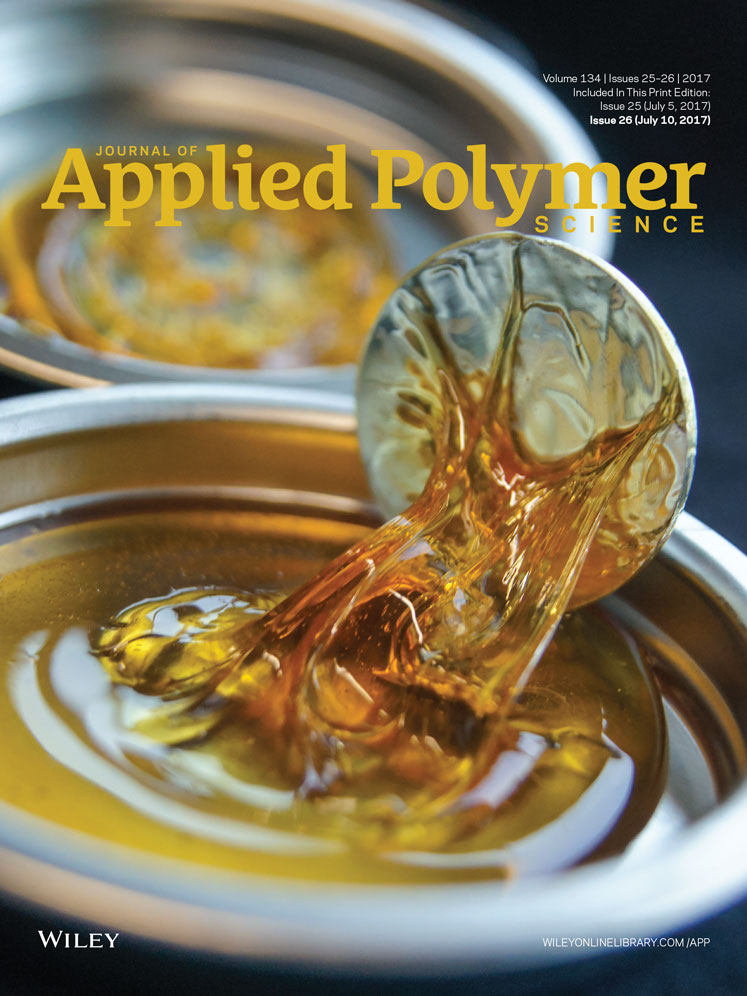Rheological and mechanical properties of blends of LDPE with high contents of UHMWPE wastes
ABSTRACT
The mixing of UHMWPE wastes with other polymers aims to reduce the environmental impact of waste materials. The dynamic rheological behavior of the blends, tensile and abrasion properties, Shore D hardness and impact resistance, and morphology are important in characterizing polymer blends. In this work, we have sought to obtain blends containing different proportions of UHMWPE wastes and LDPE with properties suitable for the manufacture of useful products. The blends exhibit an increase in complex viscosities, storage modulus, and Young's modulus with increasing content of UHMWPE wastes and a decrease in both the maximal elongation and Charpy impact resistance. Summarizing, the addition of up to 60 wt % of industrial fragments of UHMWPE is possible using conventional methods of processing to prepare blends with values of tensile strength, abrasion, and Shore D hardness similar to those of LDPE. © 2017 Wiley Periodicals, Inc. J. Appl. Polym. Sci. 2017, 134, 44996.




